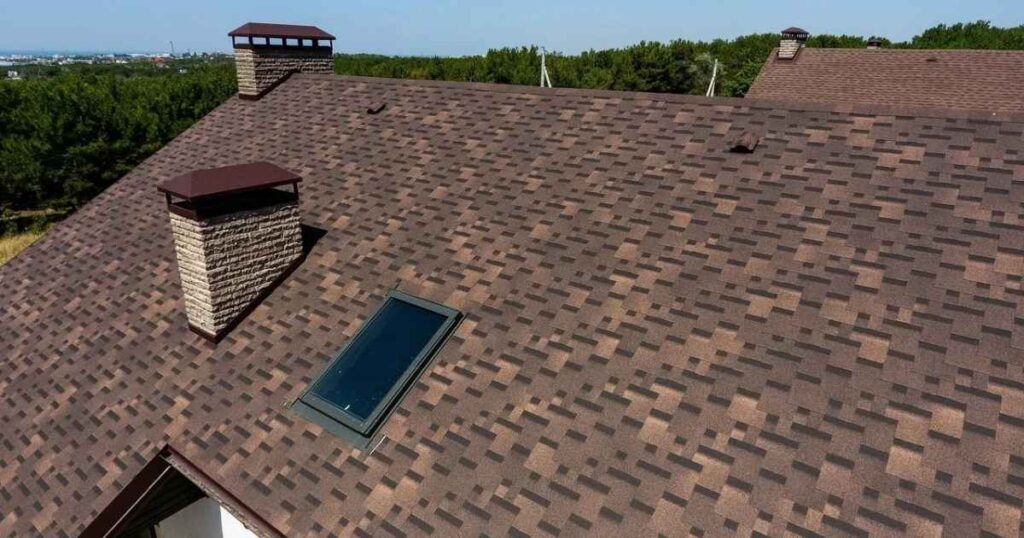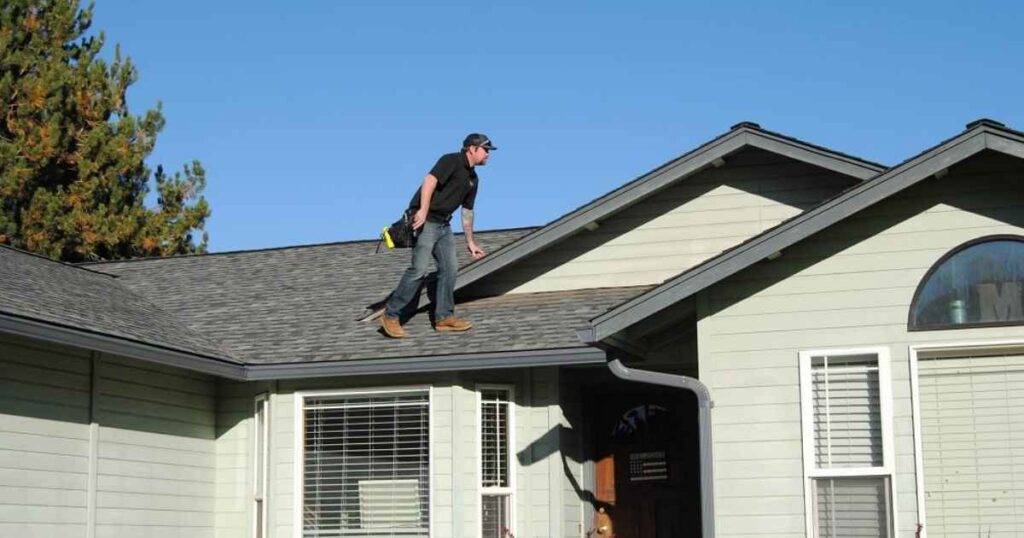In California, your roof stands between you and the state’s unpredictable weather. From intense sun to sudden storms, roof insurance coverage in California protects homeowners from costly repairs or replacements when damage strikes. Knowing your policy’s details can save you big in the long run.
Don’t wait until disaster hits to understand your roof insurance coverage now. Whether it’s fire, storm damage, or wear and tear, knowing what’s covered could be the difference between financial security and a major headache.
What Does Roof Insurance Cover in California?
Roof insurance typically covers damage caused by sudden and unexpected events such as storms, fires, wind, and falling objects. In California, this often includes windstorms, wildfires, and heavy rain. Policies generally pay for repairs or roof replacement if the damage is due to covered events, but they usually exclude wear and tear from aging or poor maintenance. For example, if a wildfire damages your roof, your insurance will likely cover repairs. However, if your roof leaks due to age, you might be out of luck unless you have additional coverage.
Does Homeowners Insurance Cover Roof Replacement in California?
Yes, homeowners insurance can cover roof replacement in California, but only under specific conditions. If your roof is severely damaged by a covered event, like a storm or fire, your policy may cover the cost of replacing the entire roof. However, coverage varies by policy.
Some insurers may only pay the “actual cash value,” which accounts for depreciation, meaning older roofs will get less coverage. To get full coverage, homeowners should look for policies offering “replacement cost value” to cover the full expense of a new roof without depreciation.
California-Specific Considerations for Roof Insurance
California homeowners face unique risks, including wildfires and earthquakes, which can greatly impact their roof insurance. Most standard policies cover wildfire damage, but earthquake damage is often excluded unless you purchase separate earthquake insurance.
In addition, if you live in a high wildfire risk area, your insurance premiums may be higher, or your coverage may be limited. It’s essential to review your policy to ensure it includes coverage for regional hazards and to check if supplemental insurance, like earthquake coverage, is necessary for full protection.
Being aware of these factors ensures you’re prepared for the unexpected.
How to Read Your California Homeowners Insurance Policy

Understanding your California homeowners insurance policy is crucial for knowing your roof coverage. Start by locating the section that specifies what perils are covered, like fire, wind, or hail, and check if exclusions are listed for certain types of roof damage, such as wear and tear or aging.
Look for terms like “replacement cost” and “actual cash value,” which determine how much you’ll receive in a claim—replacement cost covers the full expense of a new roof, while actual cash value is deducted for depreciation. Also, note the deductible you’ll have to pay before insurance kicks in. Review endorsements or riders that add specific coverages, like for earthquakes or floods, which are not included in standard policies.
Filing a Roof Insurance Claim in California
Filing a roof insurance claim in California is a step-by-step process that starts with assessing the damage. Document the issue with photos and gather any relevant paperwork, like receipts for repairs or past inspections. Contact your insurance company immediately to report the damage and schedule an adjuster to assess the roof.
Make sure to provide all necessary details about how and when the damage occurred. After the adjuster’s visit, your insurer will determine whether the damage is covered and how much they will pay. It’s a good idea to get an independent contractor’s estimate to compare with the insurance offer to ensure fair compensation.
Roof Maintenance Tips to Keep Your California Insurance Valid
Maintaining your roof is crucial to avoid denied claims from your insurance company. Most policies require homeowners to perform regular upkeep to ensure coverage. Neglecting basic maintenance can lead to claim rejections, especially for issues caused by wear and tear.
Here are key roof maintenance tips:
- Inspect regularly: Check for damaged shingles, leaks, or signs of wear, especially after storms.
- Clean gutters: Clogged gutters can cause water to back up, damaging your roof.
- Trim trees: Overhanging branches can fall and cause significant roof damage.
- Repair promptly: Fix small issues like missing shingles or cracks before they turn into larger, costly problems.
- Schedule professional inspections: Have a licensed roofer inspect your roof annually to catch potential issues early.
- Keep records: Document all maintenance work with photos and receipts to provide proof if needed during a claim.
These proactive steps will keep your roof in good shape and ensure your insurance remains valid.
When Might Roof Insurance Not Help?
Roof insurance doesn’t always cover every type of damage. One of the most common reasons for denied claims is normal wear and tear. Over time, roofs naturally age, and most policies won’t cover damage that results from gradual deterioration.
If your roof is past its expected lifespan or hasn’t been maintained properly, your claim might be rejected. Additionally, damage from earthquakes or floods is typically not covered under standard homeowners policies unless you have specific riders or separate insurance for these events. Cosmetic issues, like discoloration or minor cracks, are also often excluded. Lastly, if the damage is due to poor workmanship or faulty installation, the insurer may not cover the repairs.
How to Choose the Right Roof Insurance?
When selecting roof insurance in California, consider the following factors to ensure optimal coverage:
- Understand your roof’s age and condition: Some insurers may limit coverage for older roofs or require higher premiums.
- Look for replacement cost value: This ensures you’ll receive the full amount for a new roof, not the depreciated value.
- Check for regional risks: If you live in an area prone to wildfires or earthquakes, make sure your policy covers those hazards.
- Compare policies: Get quotes from multiple insurers to find the best balance of coverage and premiums.
- Review exclusions: Be clear on what isn’t covered, and consider endorsements for additional protection like earthquakes or floods.
ALSO READ : What is Int l digital charge on your bank statement?
Types of Roof Damage Covered in California
Homeowners insurance in California often covers a variety of roof damage types. Here’s a breakdown of the most common events:
1. Storm Damage
California experiences its share of storms, and most insurance policies cover roof damage caused by high winds, heavy rain, or hail. This includes blown-off shingles, leaks from wind-driven rain, or other structural damage due to extreme weather.
2. Fire Damage
Given California’s wildfire risk, fire damage is one of the most crucial types of coverage. If your roof is damaged or destroyed by a wildfire or house fire, your insurance should pay for repairs or replacement. It’s essential to ensure wildfire coverage is part of your policy.
3. Falling Objects
Damage from falling objects, like trees or branches during storms, is generally covered. Insurance will typically handle the cost of repairs if debris from storms causes structural harm to your roof.
4. Vandalism
If your roof is deliberately damaged by an act of vandalism, this is usually covered under standard homeowners insurance. Whether it’s broken tiles or holes caused by intruders, your policy should address the necessary repairs.
5. Water Damage
Water damage caused by sudden events, such as a storm or burst pipe, is often covered. However, leaks due to wear and tear, poor maintenance, or age are usually excluded. Always maintain your roof to prevent leaks that insurance won’t cover.
How Climate Affects Roof Insurance in California?

California’s climate can greatly impact roof insurance. The state’s diverse weather conditions—ranging from scorching summers to rainy winters and wildfires—put roofs at higher risk. In regions prone to wildfires, like Northern and Southern California, homeowners face higher insurance premiums or coverage limitations.
Roofs in coastal areas may also experience damage from salty air and wind, affecting their lifespan and coverage terms. Meanwhile, in earthquake-prone regions, earthquake damage is typically not covered by standard policies, requiring separate insurance. Regular exposure to these elements influences insurers’ assessments of risk, making it crucial for homeowners to understand how climate-specific risks impact their policy.
Roof Insurance Costs in California
Roof insurance costs in California vary depending on factors like your home’s location, the roof’s age, and its material. Homes in high-risk wildfire or earthquake zones often have higher premiums, and older roofs may result in increased costs or limited coverage. A roof made from fire-resistant materials like metal or tile can reduce insurance rates, while wooden roofs may drive costs higher. On average, California homeowners spend $1,000–$1,500 annually on homeowners insurance, with roof coverage included, but this can fluctuate based on specific risks and deductibles.
Making a Roof Insurance Claim in California
To make a roof insurance claim in California, start by documenting the damage with photos or videos. Contact your insurance company as soon as possible to report the incident. Schedule an inspection with an adjuster, who will assess the extent of the damage. It’s advisable to get an estimate from a licensed roofer to compare it with the adjuster’s report. Provide any necessary receipts or documentation to support your claim. Once approved, your insurer will cover repair or replacement costs based on your policy’s terms. Be prepared to pay your deductible before coverage kicks in.
How to Maintain Your Roof for Better Insurance?
Regular roof maintenance can prevent damage and help maintain valid insurance coverage. Key maintenance tips include:
- Annual inspections: Hire a professional to inspect your roof for damage.
- Clean gutters: Remove debris to prevent water buildup and leaks.
- Repair minor issues: Fix loose shingles or small leaks before they worsen.
- Trim trees: Prevent branches from falling onto your roof during storms.
- Keep records: Document all maintenance activities with photos and receipts to show your insurer.
What to Do If Your Roof Insurance Claim Is Denied?
If your roof insurance claim is denied, review the denial letter to understand the reasons. Common issues include improper maintenance or exclusions in your policy. If you believe the denial was incorrect, you can file an appeal. Start by gathering evidence, such as inspection reports, maintenance records, and independent contractor estimates. Contact your insurance company for a reconsideration. If the appeal fails, you may consider legal action or hiring a public adjuster to reassess your claim.
CONCLUSION:
Understanding your roof insurance coverage in California is essential to safeguarding your home against various risks. From storm and fire damage to the impacts of climate-specific factors, being informed can help you make the most of your policy. Regular maintenance, knowing your coverage details, and being prepared for claims or denials will ensure you stay protected and minimize potential financial setbacks. Stay proactive and review your insurance policy to keep your roof and your home secure.
People also ask
- What does homeowners insurance cover in California?
Homeowners insurance in California typically covers damage from fires, storms, theft, and vandalism, but excludes earthquake and flood damage unless specifically added. - What is the minimum amount of insurance coverage required in California referred to by the insurance industry as?
The minimum amount of insurance coverage is often referred to as the “dwelling coverage” or “coverage A,” which is based on the home’s replacement cost. - Who sells homeowners insurance in California?
Homeowners insurance in California is sold by major providers including State Farm, Allstate, Farmers Insurance, and numerous others, including regional insurers. - Is Progressive insurance leaving California?
No, Progressive Insurance is not leaving California; it continues to operate and offer policies in the state.







